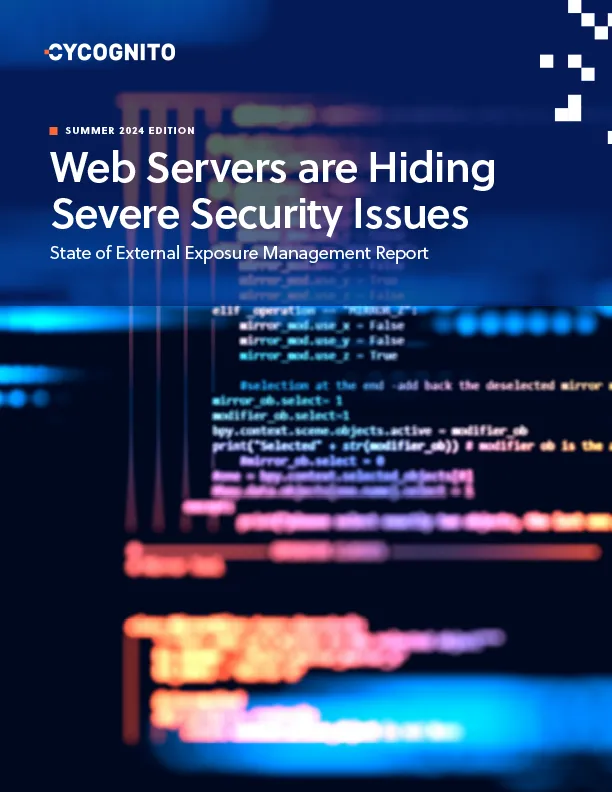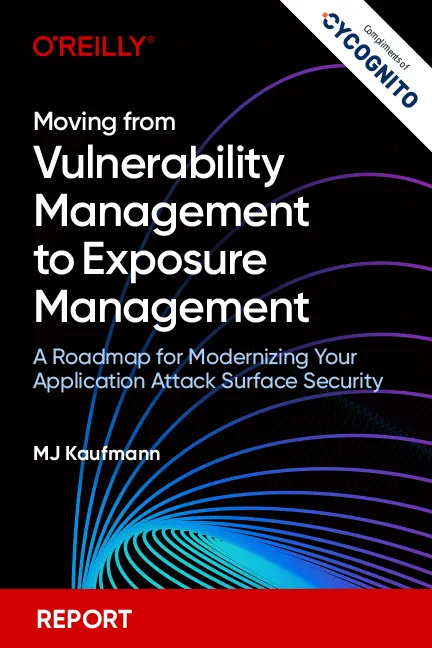Automation and intelligent workflows are the cornerstones of an effective external risk management approach to cybersecurity and a surefire way to reduce mean time to remediation of vulnerabilities.
I have been working in the IT and cybersecurity industry since 2011, both as a practitioner and a manager. I’ve always been surprised by the amount of time and resources I managed to save while deploying and optimizing automated cybersecurity related processes. Over the years I have managed to understand that automations are not a nice addition to cybersecurity but a must have.
That’s why I believe automations and workflows are the beating heart of security operations— allowing security teams to more easily scale and manage large enterprises. That’s why I’m surprised when security operations teams treat automated processes as a nice-to-have. Even those security teams that create automated workflows, often underutilize it, leading to inefficient processes and even incorrect risk remediation workflows.
Leveraging the full range of features and capabilities of automation provides a powerful tool to manage daily activities and support emergencies as well. This works toward the ultimate security operations goal of saving resources, reducing the mean time to remediate risks and avoid breaches proactively.
The Power of the API
A proper application programming interface (API) is a starting point for introducing automation into workflow. The goal is to have an efficient and automated security operations (SecOps) workflow. APIs streamline this process by creating a unified communication channel to allow for automated workflows between systems or datasets.
An API provides you with the ability to successfully automate most processes – pull and push data from specific datasets and edit those specific pieces of data programmatically in order to achieve business goals. But simply having an API in place does not mean you have leveraged the full benefits of automation—nor does automatically calling an API on a regular basis and fetching data mean that you have mastered the science of automated workflows.
So when do you know you have reached your goal? And when can you proudly claim that you have a great set of useful automations and workflows in place that will allow you to reduce dependency on manual labor and let your security practitioners focus on what’s really important?
Let’s dig into that a bit.
Next Steps in Security Automation
Before diving into why and how to create automated workflows and how to leverage them – first lets explore the key metrics needed to define success.
The answer begins with three words: resources, resources, resources. That is human resources, time resources and financial resources.
These three resources are the things we would like to conserve as much as possible in our workday. People, time and money are not always on hand. This is where automated workflows can make up the difference.
Automation saves time and manual labor for security practitioners. For example, one of the most popular automation use cases is tied to the “the consolidated security operations management system.” Automating this workflow means security teams don’t need staff to sign into dozens of different platforms and managing each of them on a daily basis. This is a costly and time consuming process. Automations and data consolidation will allow security teams to use a single system that synthesizes a large number of data sources and even produce unique insights.
But this does not solve the problem entirely, because feeding the data from a huge number of sources—all of which deliver data in a variety of formats and communication protocols—is a challenge in itself. Choosing a solution that has built-in integrations with the other product suites in your security operations workflows is the way to go.
Pro Tip: Instead of wasting time with creating numerous one-off automations, make sure you choose a solution that has already solved these problems and gives you an optimized automated workflow out of the box.
Work Smarter, Not Harder and Save Time
Security teams often deal with a huge volume of issues, vulnerabilities and misconfigurations. Often, the main challenge is understanding which of these to handle first and how to avoid background noise, such as large quantities of legitimate, non-malicious or simply irrelevant data that is aggregated and processed.
In these cases, automating the processes and workflows between different security products can be very effective in reducing noise. SOAR (Security Orchestration, Automation and Response) platforms. For example, an automatic remediation feature for certain issues (enabled through automation) can significant reduce a portion of the remediation process.
Another great use case for automations is the ability to filter out lower-priority events or issues that do not require urgent attention. An automated process can dictate how and what incidents are handled. When an incident needs to be remediated and prioritizes automation has the ability to show you evidence so you can determine what should be handled first.
Automated workflows that allow your team to go through an entire incident cycle with little to no manual work are your best friend. And if they are not yet, they should be. Trust me.
Save Money, Act Faster
A key indicator to understanding whether your security operations team is properly leveraging automation is called mean time to remediate (MTTR). It is a very useful metric when trying to understand the performance of security teams.
In the context of External Risk Management (ERM)—and specifically in External Attack Surface Management (EASM)—MTTR is a key performance indicator that security operations teams constantly try to improve. It is also the basis of one of the most common questions asked by security teams when evaluating solutions: How can this product help my security operations team reduce MTTR?
How CyCognito Can Help?
ERM and EASM products should be able to provide a set of tools to reduce MTTR. And a relatively large number of these tools rely on automations and workflows.
Benefits include:
- Automatically prioritize the really important issues by combining relevant intelligence sources —not just leveraging CVSS scores.
- Automatically create events, tickets and workflows based on different use cases. These should be integrated with popular ticketing tools, incident management platforms, security orchestration platforms, and other relevant products out-of-the-box.
- Automatically attribute discovered assets (IP addresses, domains, and more) to the relevant stakeholders who own and can fix them. Products that discover “unknown” assets tend to spit out a list of assets without providing much context about their ownership or even what business purpose they serve, creating even more chaos and lack of confidence than before their implementation.
These automated, intelligent workflows are just a glimpse of what an ERM platform can provide to a security team in order to reduce MTTR.
We at CyCognito are constantly working to enrich our platform with more (and better!) automation, integrations, and workflows. Out of the box, we integrate with dozens of popular products—either using native in-app integrations for standard enterprise security products such as Splunk, ServiceNow Vulnerability Response, and Palo Alto Networks Cortex XSOAR, a holistic recipe-based workflow feature in our platform, or our native API.
We encourage you to leverage CyCognito’s capabilities to reduce MTTR, enhance your automations and workflows, and manage your external risk and attack surface. I invite you to learn more about CyCognito’s EASM platform via this demo that shows how we can help you protect your business.
Aviel is a former product manager at CyCognito and a cybersecurity expert with a background in enterprise security operations, penetration testing and working alongside Fortune 500 security teams.










 Attack Surface
Attack Surface